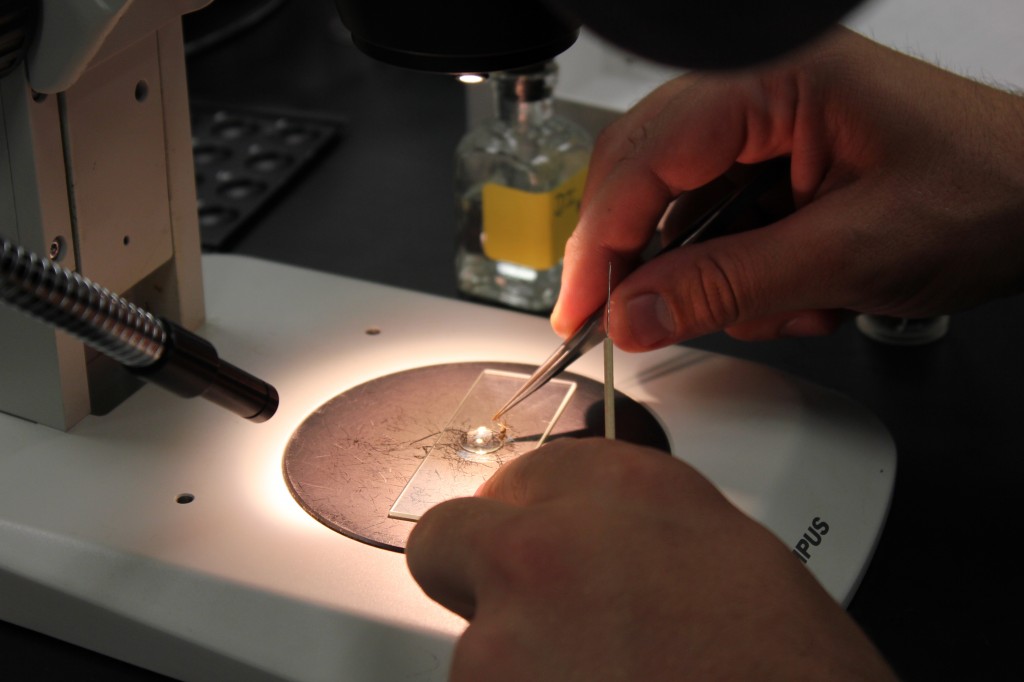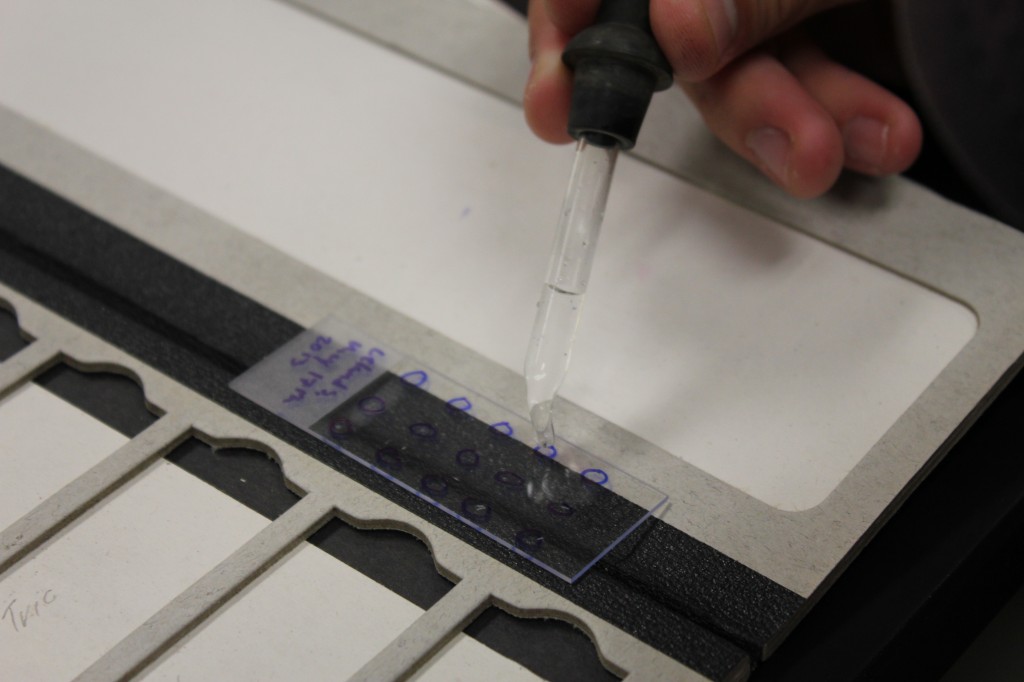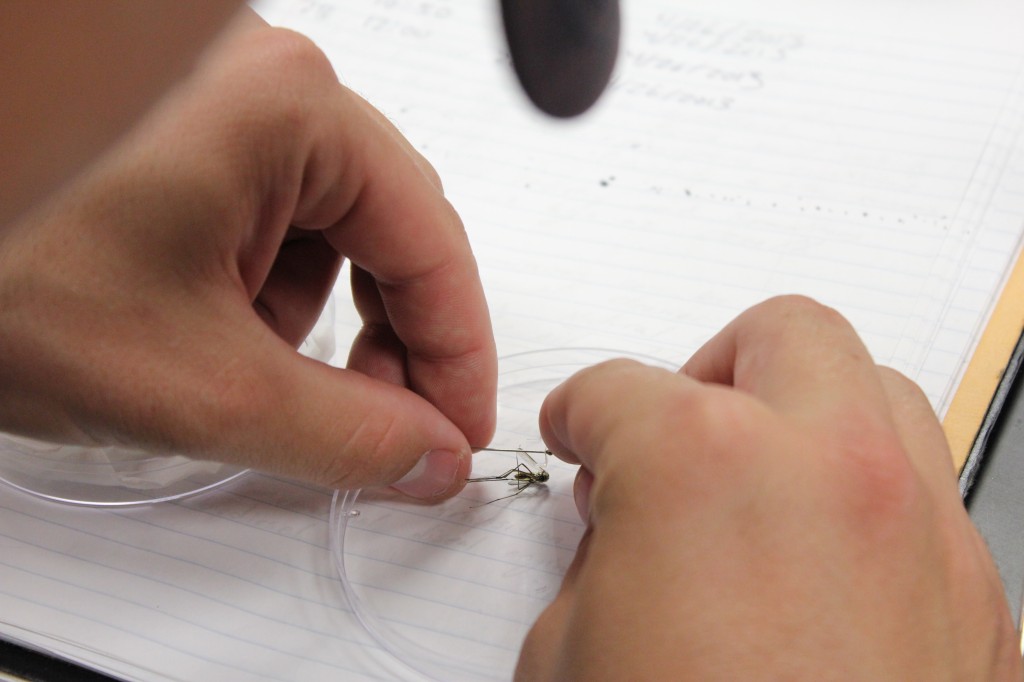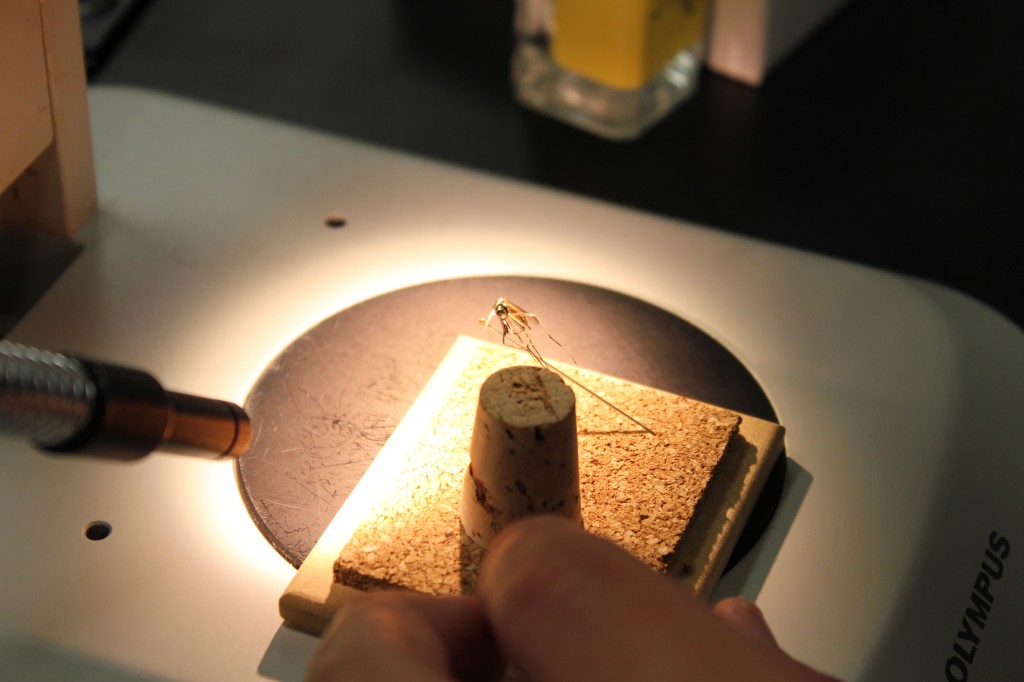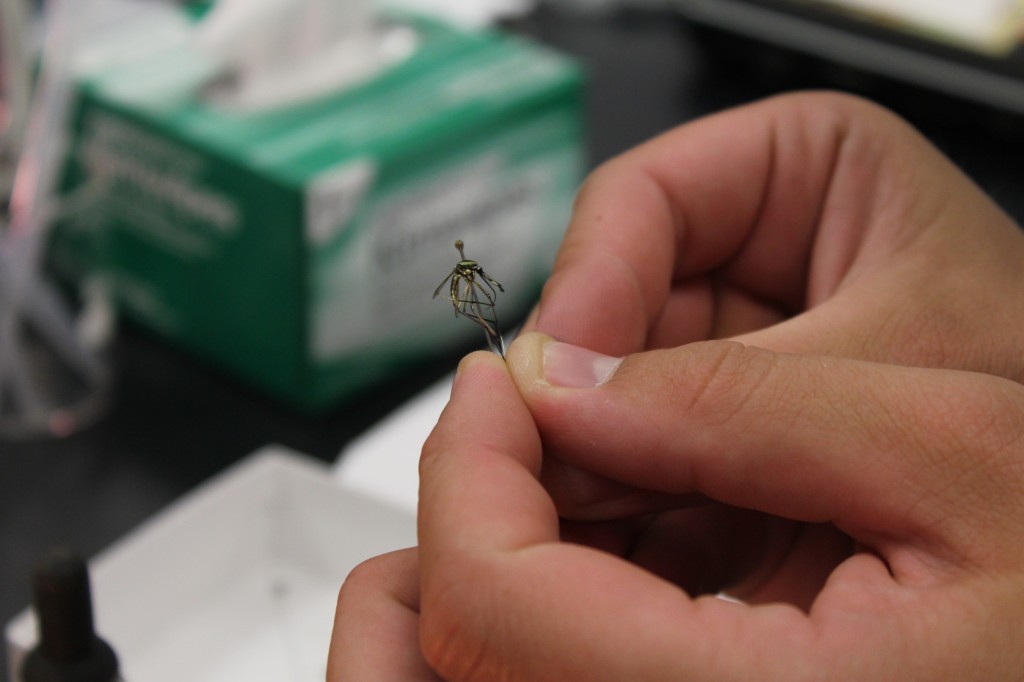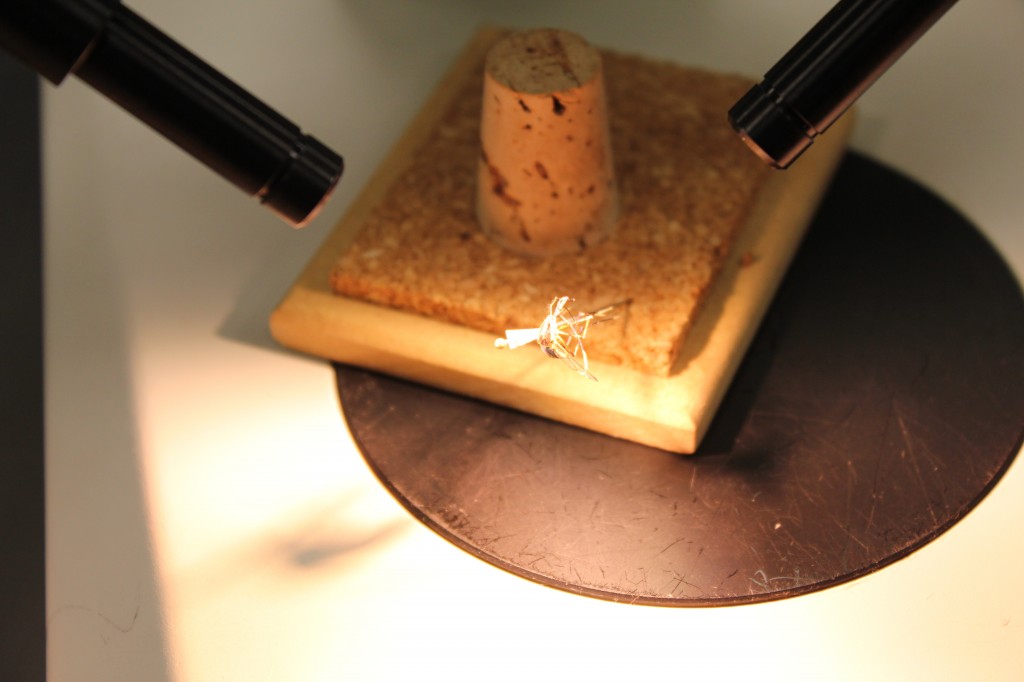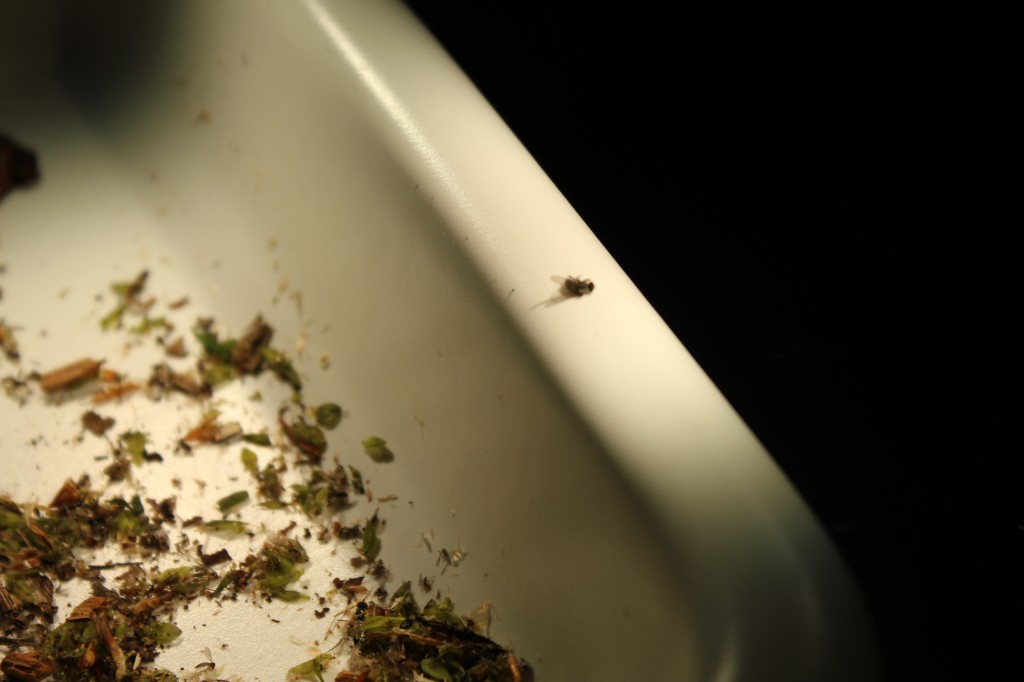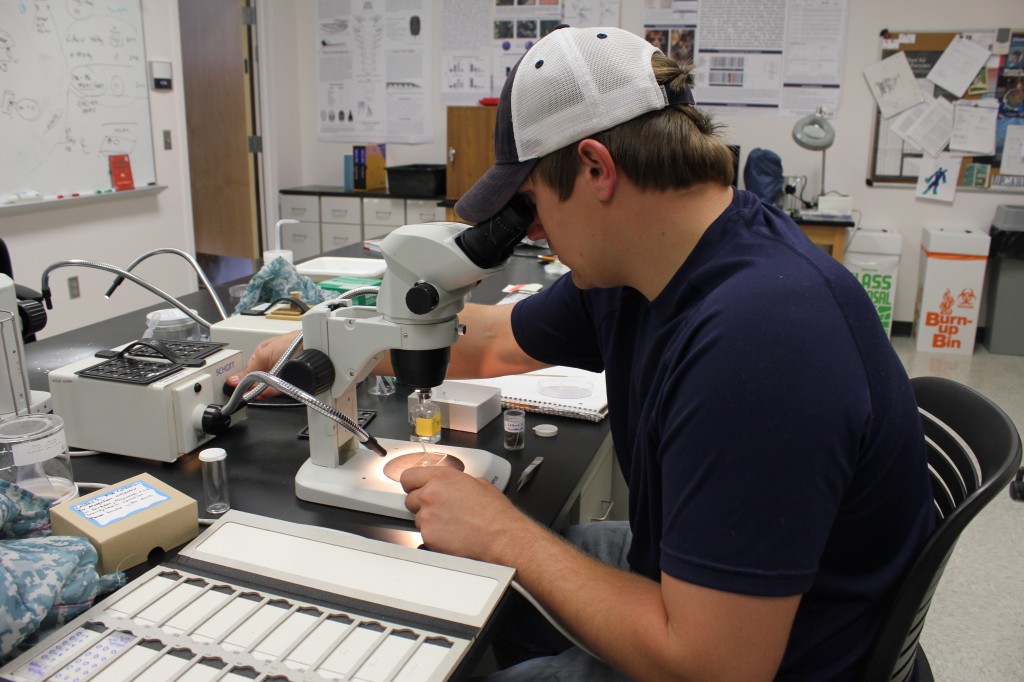Mosquitoes are one of the most common pests in Western North Carolina, but they bring a greater risk than itchy bites.
Western Carolina University environmental health professor and public health biologist Brian Byrd has a passion for insects, particularly mosquitoes. Though he has also worked with tics and mites, Byrd specializes in mosquito-borne diseases such as La Crosse encephalitis.
La Crosse virus is transmitted through certain kinds of non-native invasive mosquitoes, according to Byrd. The first is Aedes albopictus, or the Asian tiger mosquito. The second is Aedes japonicus, also known as the Asian rock pool mosquito. Both are believed to have been brought to the United States through South Eastern Asian tiger trades.
A. albopictus is commonly found around houses and is aggressive.
“Those are the ones that’ll chase you down the hall,” said Byrd.
Though La Crosse virus can be deadly, Byrd says it’s still relatively uncommon with only 20 cases a year recognized. There have only been two deaths related to La Crosse virus in the past four years. Children under 16 years old are at the greatest risk for contracting the disease.
According to the CDC, many people do not have apparent symptoms. A recent article in Vector-Borne and Zoonotic Diseases mentions that employees in the Great Smoky Mountains tested positive for La Crosse virus without actually showing symptoms.
The CDC lists symptoms as being:
- Fever
- Headache
- Nausea
- Vomiting
- Fatigue
- Lethargy
Severe symptoms, mainly found in those below 16 years of age, include:
- Seizures
- Severe neuroinvasive disease
- Neurologic sequelae, including recurrent seizures, partial paralysis and cognitive and/or neurobehavior abnormalities
Besides infecting citizens, the non-native invasive mosquitoes have been causing problems in other areas. A. japonicus has been pushing out native mosquito Aedes atropalpus, which was commonly found in rock ponds. A. atropalpus did not require blood to lay her eggs, whereas A. japonicus does. This means that not only are the rock pools being replaced by a mosquito that needs to feed before laying eggs, but the mosquito that needs blood carries diseases that can be transmitted to humans.
The mosquitoes are most commonly found in Haywood, Jackson and Swain counties, though Buncombe County has seen an increase in the species.
The new Health and Human Sciences building houses an insectary and labs were environmental health students have the opportunity to work with these non-native invasive mosquitoes. Students are able to identify, dissect and even work on polymerase chain reactions that look at the DNA of mosquitoes. With the help of the community and parks and recreation management, WCU students are able to gain valuable information about the non-native invasive mosquitoes of WNC.
Bellow is a video of a student working with the mosquito larvae to determine what species they are.
Video and production by April Alexander
